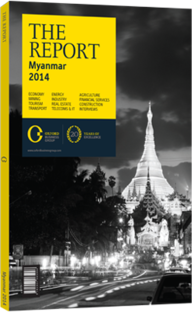A national treasure: If Myanmar is to get value for its gems, it must do more than mine them
Gems are, as ever, a boon to the Myanma economy. The sector employs thousands and raises millions, for the state as well as for insurgent groups. Sanctions and civil war – let alone nationalisation, military control and international campaigns – have greatly affected the sale of precious stones. Jade, rubies and sapphires have nonetheless always managed to get past the borders and red tape to provide a share of income for the country. Myanmar has such a lock on some stones (90% of the ruby market) and some of its gems are so unique and highly prized that the product will sell regardless of obstructions. Now that the country is undertaking reforms, the gems business is likely to expand and evolve, going from a crude but effective earner of foreign exchange to a full-blown industry in its own right. Productivity will rise, the international market will expand and more value will be added within the country.
From Isolation To Reform
As with most of the economy, the gem trade suffered during the country’s years of isolation. Under the Burmese Way to Socialism, the ideology that reigned for 26 years until 1988, mines were closed to foreigners, private enterprise was forbidden and production declined. Some efforts pushed in the opposite direction. From 1964, the country began holding gem shows – the Myanmar Gems Emporium – to get the product to market. In the late 1980s and early 1990s, reforms to boost efficiency were passed. In 1990 the state began allowing joint ventures with private firms, and in 1995 a new Gemstone Law drew the legal framework for liberalisation of the value chain.
The reforms have been effective over time. While gem shows sell only a portion of the total, the numbers have clearly been rising. According to statistics compiled by Palagems International, about $15m of gems were sold at the fair held in March 1990. For a decade the numbers rose slowly and inconsistently, to $25m in March 2000. They fell for a few years, then rocketed: to $35m in October 2004, $101m in March 2006, $185m in March 2008 and $496m in March 2010. A record $2.8bn were sold in March 2011, then $2.4bn in June 2012.
Between 1964 and mid-2013, Palagems estimates the cumulative total of gems sold in the country at $13.5bn.
Price & Production
Much of this has to do with the behaviour of prices. According to Gemval, an appraisal service for precious stones, the price of rubies on a relative index scale went from 100 in 2005 to 178.8 in 2013, while sapphires rose from 100 to 160.5. Production increase also had a hand. According to the US Geological Survey, in 1990 Myanmar produced 576,000 kg of jade and 298,000 carats of rubies, sapphires and spinel. By 2011, the country was producing 45m kg of jade and 1.5m carats of sapphires alone; rubies were another 870,000 carats and spinel, 620,000. Though the trend of the last 20 years is clear, Western sanctions, now mostly lifted, did take a toll (see Overview): production of sapphires, rubies and spinel peaked in 1998 at around 14m carats, double recent output.
The goal now is not so much for Myanmar to get into the business as into the value added tasks associated with it. Downstream processing may be a buzzword in all resource sectors, but should be all the more so with gems, which are subject to massive mark-ups from pit to ring or necklace. It is estimated that Myanmar only gets about 10% of the value of a stone; the rest goes to those outside the country who cut, polish, wholesale and retail the final product. This, say gem dealers, is mostly a matter of money and organisation. The Myanma gems sector, they argue, needs to invest in equipment, education, standardisation and marketing so it can take back the elements of its value chain that were lost to Thailand and elsewhere. While reforms have led to investment at the mines and have increased production and efficiency, the potentially most valuable steps have not yet been taken domestically.
These elements of the business could emerge naturally over time. As urban centres evolve, better housing, communications and banking will draw more value-added back to Myanmar. Bangkok, after all, is a major global centre in the gems trade largely because it has the ancillary businesses and services needed.
You have reached the limit of premium articles you can view for free.
Choose from the options below to purchase print or digital editions of our Reports. You can also purchase a website subscription giving you unlimited access to all of our Reports online for 12 months.
If you have already purchased this Report or have a website subscription, please login to continue.

